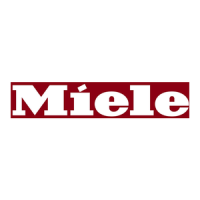Brief instructions
The headings numbered A, B, C, . . .
show the operating sequence and can
be used as brief instructions.
A Sort the laundry
^ Empty all pockets.
,
Foreign objects (e.g. nails,
coins, paper clips, etc.) can cause
damage to garments and compo-
nents in the machine.
^
Badly soiled areas, stains etc. should
be cleaned as soon as possible, pre
-
ferably whilst still fresh. Spillages
should be carefully dabbed off using
a soft colourfast cloth. Do not rub!
Badly soiled areas can be pre-treated
with liquid detergent, stain removers
etc. first, following the manufacturer's
instructions. With particularly stubborn
stains ask your dry cleaner for advice.
,
If you use a solvent-based clean
-
ing agent (e.g. one containing ben
-
zene) to pre-treat a stain, make sure
that any plastic parts (e.g. buttons)
are protected, and that the cleaning
agent is rinsed off before washing the
garment in the machine.
,
Do not use solvent-based clea
-
ning agents in this machine.
^
Sort the laundry by colour and by
care label. Most garments have a
textile care label in the collar or side
seam.
Dark textiles often contain excess dye
and should be washed separately se-
veral times before being included in a
mixed load. Always wash whites and
coloureds separately.
– Curtains: Remove lead weights first
or place in a laundry bag.
–
Underwiring and collar stiffeners:
Any loose wiring in bras, shirt collar
stiffeners, etc. should be removed or
sewn in.
–
Knitted garments, trousers and
jeans, T-shirts and sweat shirts: Turn
inside out, if recommended by the
manufacturer.
–
Close any zips, fasten hooks and
eyes etc before washing.
–
Fasten duvet covers etc. to prevent
small items from being rolled up insi
-
de them.
Do not wash any items in this machine
which are specified by the manufactu
-
rer as not washable on the care label.
(h symbol)
How to wash correctly
14

